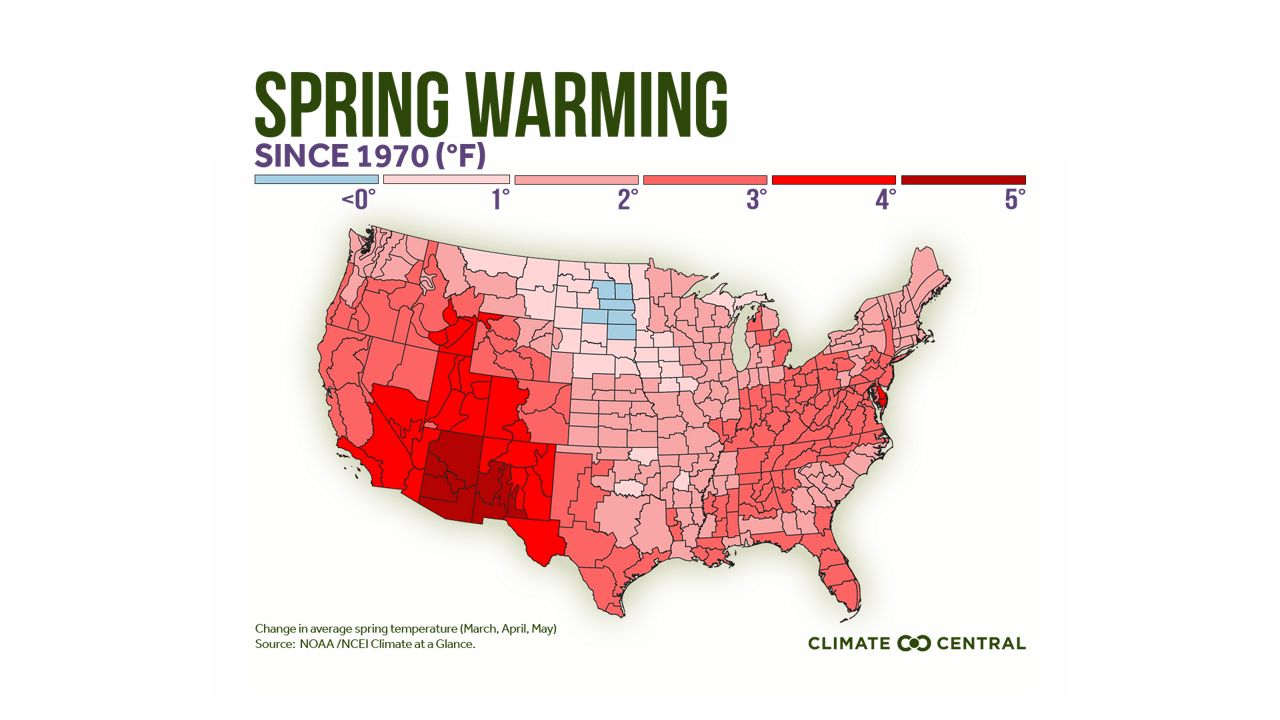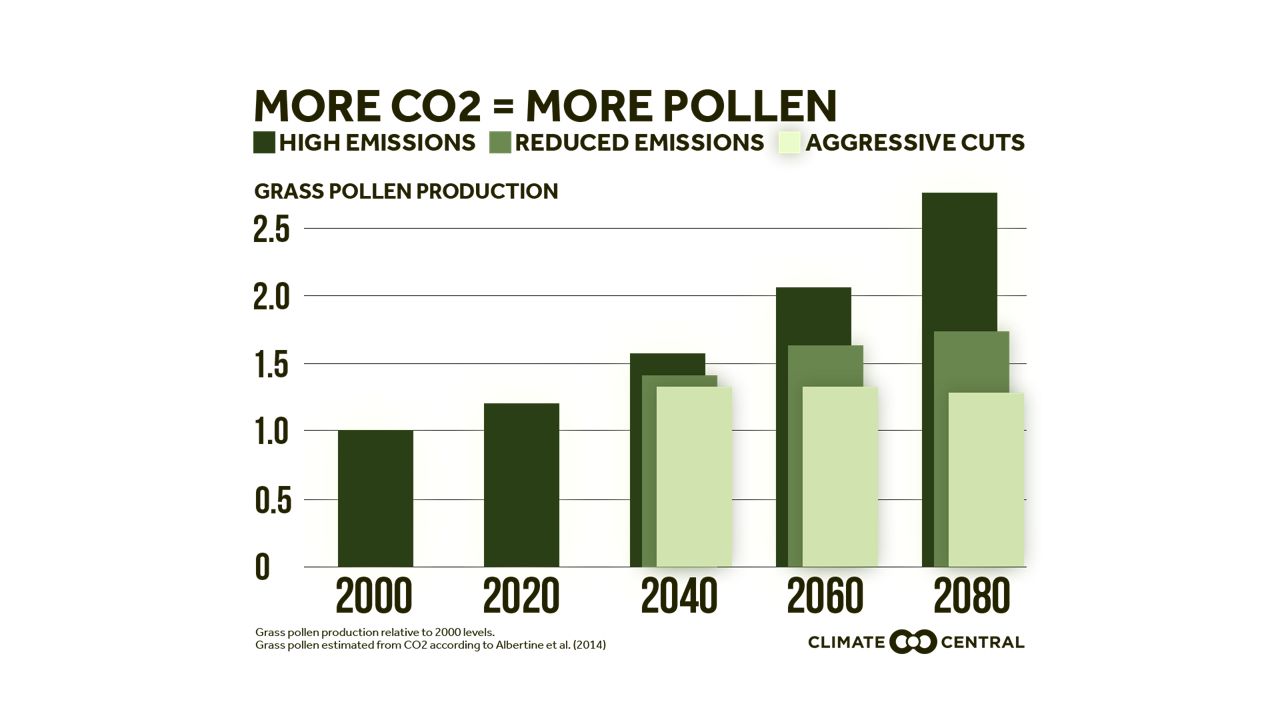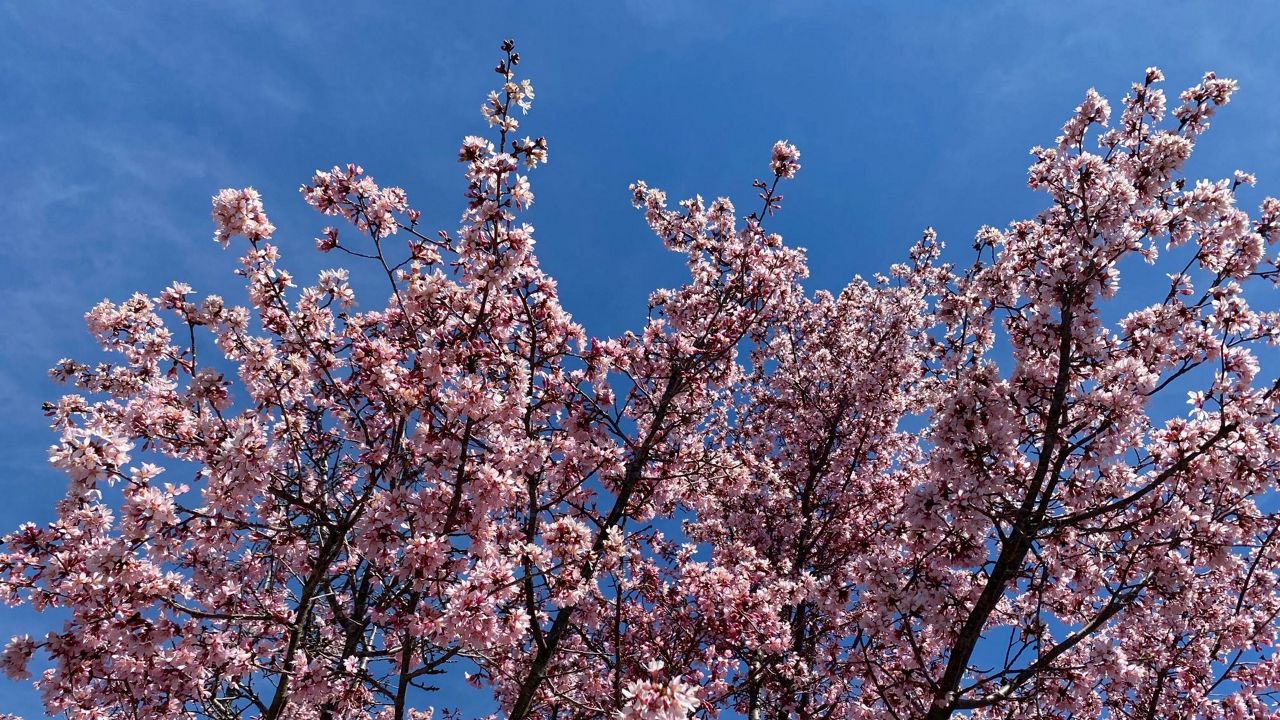Temperatures have climbed higher and higher in the spring season for most of the country over the past half-century. While that might mean you can put away the heavy coat sooner, you might have to reach for the allergy medicine sooner, too.
Since 1970, all but a part of the Northern Plains have seen springs trend warmer. The Southwest had the greatest warming, with some cities going up by about six degrees.

About half of the 234 cities that Climate Central tracked warmed by at least two degrees.
A warming spring means an earlier spring–and a longer growing season. Flower-lovers may be happy to hear that, but allergy-suffers probably aren’t.
Spring pollen allergies come from trees and grasses, which rely on the wind instead of insects to scatter their pollen. If these plants pollinate sooner, then allergy season starts sooner, too.
And, research shows that the spring allergy season doesn’t shift ahead in time with an earlier start leading to an earlier end.
“Signs point more toward a longer spring pollen season from start to finish,” says Hannah Jaffee, a research analyst at the Asthma and Allergy Foundation of America. “From 1990 to 2018, pollen seasons in North America grew by 20 days, primarily at the start of the spring pollen season.”
Warming temperatures and increasing carbon dioxide may also contribute to higher amounts of pollen. So, it’s not just a longer season… there’s more of it, too.

If you’re fortunate enough to not deal with spring allergies, you’ll still have to face the likelihood of mosquitoes buzzing around longer. Studies from the National Institutes of Health show that the blood-sucking pests do best when the temperature is between 50 and 95 degrees and the relative humidity is at least 42%.
Getting into that threshold will happen sooner in the spring as temperatures continue warming. The number of “mosquito days” each year, according to Climate Central, has increased for a majority of the country. The exception is mostly in southern regions, where more summer days are too hot.



